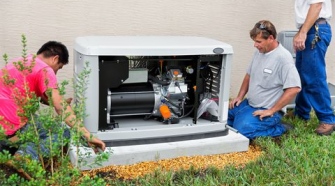Brick and mortar retailers have been in existence from time immemorial but face a stiff challenge with the growing popularity of online retail. In fact, many traditional retail stores have witnessed a decline in footfalls as online retail has been able to lure them with a better user experience and price differentials.
Retail analytics, which has played an intrinsic role in the success of online retail, now offers custom solutions for traditional brick and mortar retailers as well. Customers today are tech-savvy, mobile-ready, and socially active, but that need not necessarily translate into advantage for online retailers.
Here is how implementing retail analytics as an in-store retailer can offer consumers an even better user experience right in their neighborhood store.
Select the right technology
The key is to choose the retail analytics program covering the bare essential needs.
Relentless advancement of retail analytics technology has meant that there are options galore for the brick and mortar stores to choose from. Depending on the area of the retail store, the budget, and aspects that require analytical insights, store owners should choose the optimum analytical solution. For example, there are retail analytics solutions that offer simple footfall counting at entrances and limited areas of interest in a retail store.
Other retail analytics that are far more advanced double up as qualitative data gathering points in store apps, iBeacons, etc. Interconnectivity between various devices and mobile devices held by the walk-in customer using Internet of Things (IoT) is another advanced feature offered by many analytics solutions.
The key is to choose the right analytics program covering the bare essential needs helping retailers usher in better sales and lesser customer churn. Essential add-ons should be implemented in phases eventually.
Focus on ease of deployment
Ease of deployment is another significant factor that should be considered before saying ‘yes’ to in-store retail analytics. Many retailers having a brick and mortar presence are not very technologically savvy. Such retailers should opt for a retail analytics solution that offers plug-and-play functionality. This way they can capitalize on their existing infrastructure and not end up spending a high amount on upgrading themselves technically.
Another feature that all in-store retailers must adopt is to make use of strategic points to deploy technology. For example, if budget is limited, covering the strategic points of a store can offer just as refined demographic insights as covering the whole store would.
Check user friendliness of management and reporting tools
Retail analytics offers various online management and reporting tools. This does not mean that every retail analytics offers a similar structured report for you to use as a retail store owner. Before choosing the apt retail analytics software, check on the dashboard and reporting structure.
Ideally, retail analytics software should offer key performance indicators or KPIs that are well defined in the report. If the store has high footfalls, the KPIs may vary drastically between weekends and weekdays. Hence, the faster the retail analytics software is able to deliver a report, the better it is for the business. Online dashboard for a retail analytics program should also have cloud functionalities allowing store owners to access reports 24/7 without having to rely on a single geographic location.
Compliment retail analytics with mobile consumer analytics
Online retailers are making use of retail analytics to offer suggestions to customers. These suggestions are usually based on browsing history and past purchases helping retailers understand and shortlist products the consumer might be interested in.
With mobile consumer analytics, now even brick and mortar store retailers can offer such suggestions to customers. This functionality can go a long way in bringing back customers who had moved over to the online bandwagon for better user experience. In-store retailers can now leverage the use of IoT where analytics software interacts with the device of each consumer and offers similar proactive suggestions like online retailers.
Seek services of a retail analytics service provider
Unlike online retailers, which have the common denominator of being in the online trade, brick and mortar store retailers require more customized solutions. Everything from the size and location of the store, the impact of online sales on product lines to budget for retail analytics implementation play their part. Brick and mortar store retailers are better off seeking the services of an experienced retail analytics service provider to help them seek the best value-for-money retail analytics solution customized for their retail operations.
Conclusion: Brick and mortar stores are getting their customer base back by implanted smarter technological tools like retail analytics solutions. This has resulted in reducing the impact online retailers have had on such traditional retail stores.












